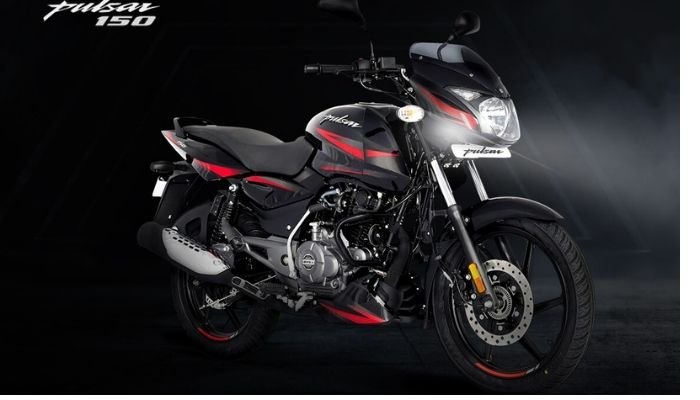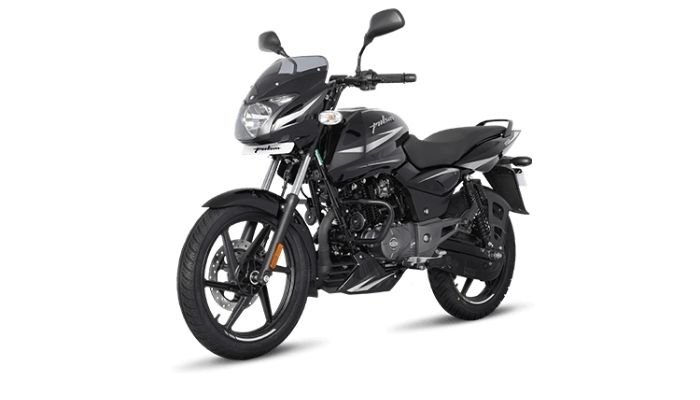The Pulsar 150 has been a timeless machine which every enthusiast wished to own. How much has it improved in all these years, let’s find out in this Bajaj Pulsar 150 review.

The brand ‘Pulsar’ needs no introduction. With a glorious history of almost twenty years till date, Bajaj Pulsar has gone on evolving to become one of the most successful motorcycles of India till date, and certainly the most successful nameplate in the segment of 150-200cc motorcycles. It is the Pulsar 150 which gave the Indians the first taste of entry-level sport riding.
Over the last two decades, the Pulsar 150 has been given numerous cosmetic changes to keep it fresh amidst the evolving competition. And this is the reason why despite being the oldest motorcycle in the segment, the Pulsar 150 continues to rule the segment with a clear lead.
[widget id=”custom_html-19″]
The year 2020 gave the Pulsar 150 another makeover, and as per Bajaj’s claims, it is the sportiest and manliest Pulsar 150 ever. Let’s find out what the new Bajaj Pulsar 150 packs in:
Looks and Design

The original design of the Pulsar 150 has been remained unchanged in all these years, and this new model continues to have the same design which the last comprehensive upgrade came up with almost two years ago. However, the overall design has been tweaked here and there, which brings it much closer to the Pulsar 180 in terms of visual appeal.
ALSO READ: TVS Apache RTR 160 Review, Price, Mileage, Specs
At the front, the Pulsar 150 continues to get the same now-familiar bikini fairing which sports tow wolf-eyed pilot lamps at the upper corners of the headlamp encased within the fairing. As compared to the last update, the graphics on the front fairing have gone away this time, making the front fascia clearer. However, the front fender now comes with stickers on either side of it.
Like the front fascia, the fuel tank with tank extensions, side body cowls and the rear side body panels too have been shared with the last Pulsar 150 as well. All of these body panels now come with fresher graphics, which in our opinion, look the best when compared to all the last updates.
This time around, there are some subtle details which make the Pulsar 150 look like Pulsar 180, like fatter front forks, aluminum rear footrest holder, split seats, split pillion grab rails, fatter rear tyre, absence of kick starter and tank pads. All these subtle changes make the Pulsar 150 look sportier than before, if not vastly new. Like before, the twin vertical LED tail lamps continue to glorify the rear stance of the motorcycle.
The part digital instrument console too has received a mild makeover. While the overall layout is same, it now comes with white background for the analogue tachometer and other bits and blue backlit for the LCD panel, which displays digital readouts for speedometer, odometer, trip meters and fuel gauge. However, despite this nice change, the unit now looks too dated. The other details like backlit switchgear and clip-on handlebars are retained in this new version as well.
Engine and Performance

Like the basic styling, the Pulsar’s other highlight, its engine too has been retained without a drastic change. It now complies with the BS6 emission norms and thus, gets an FI technology.
The motorcycle continues to source its power from the tried and tested four-stroke, single-cylinder, air cooled, 149cc DTS-i engine, which however now pumps out a slightly lesser power output of 13.8bhp and a maximum torque output of 13.25Nm at 6500rpm. The engine continues with a five-speed gearbox.
This time around, the engine feels more refined than before, with the familiar grunt from the lower revs still intact.
| Engine Displacement |
149cc |
| Engine Type |
Single cylinder DTS-i engine |
| Power |
13.80 PS at 8000 rpm |
| Torque |
13.25 Nm at 6500 rpm |
| Gearbox |
5 Speed |
| Start Mechanism |
Self/kick |
| Fuel Tank Capacity |
15 litres |
| Reserve Fuel Capacity |
3.2 litres |
| Top Speed |
110 kmph |
| 0-60 kmph |
5.6 seconds |
Mileage
Bajaj Pulsar 150 comes with an ARAI claimed fuel economy of 44 kmpl.
Ride and Handling

The suspension setup of hydraulic telescopic forks at the front and 5-way adjustable gas charged coil springs have been kept intact in the new Pulsar 150 as well. However, this time around, the forks are fatter than before – 37mm as compared to 33mm. This overall setup delivers a good balance of plush ride quality and handling which the Pulsar 150 has always been known for.
The braking setup of a 260mm disc brake at the front and a 230mm disc brake at the rear give the Pulsar 150 a much more enhanced braking feel. The 90/90 x 17 tyre at the front and a 120/90 x 17 tyre at the rear too are wider than before, thus giving the Pulsar 150 a planted feel on all kinds of surfaces. The 2020 version also gets an optional ABS (Anti-lock braking system) at front wheels.
ALSO READ: Honda CBR 650R Review
Price and Colors
The Pulsar 150 has always been known for being a synonym of a value-for-money quotient, and with the revamped set list of features, the value quotient of the Pulsar 150 rises even more.
However, the price has seen a major hike than before, which now stands at Rs. 92,627 for the Pulsar 150 Neon variant, Rs 99,584 for Pulsar 150 STD and Rs. 1.03 lakh for the Pulsar 150 Twin Disc variant (ex-showroom).
| Model |
Price (ex-showroom Delhi) |
| Pulsar 150 Neon |
Rs. 92,627 |
| Pulsar 150 STD |
Rs 99,584 |
| Pulsar 150 Twin Disc |
Rs 1.03 lakh |
The dual tone color options on the offer for the Pulsar 150 are Black with Blue, Black with Red and Black with Chrome.
Competition – Bajaj Pulsar 150 vs TVS Apache RTR 160

The Pulsar 150 has always been a direct rival to the TVS Apache RTR 160, which too has been given a slight makeover in recent times. Both the motorcycles look sharp and stylish, however, both of them have begun to show their age in recent times.
The TVS Apache RTR 160 sources its power from a single cylinder, air cooled, 159.7cc engine, which gushes out 15.12PS of maximum power and 13.03Nm of maximum torque, numbers which make it a much stronger performer in comparison.
However, the overall refinement and low end power of the Pulsar’s engine is better, whereas the Apache advantages in the top end grunt and acceleration figures. There is nothing much difference in the ride quality and dynamics, with both the motorcycles being able city handlers with added zest.
Conclusion
The Pulsar 150 has made a strong reputation to bank upon, as it is a perfect city commuter for those who want a powerful bike to make their life easier with added power over regular 100-125cc motorcycles.
The latest update only makes the Pulsar 150 sportier than before, with the changes being comprehensive both in terms of cosmetic as well as mechanical. The Pulsar 150 has always been decent when it comes to features and performance, and this recent update only helps it in this direction.
However, needless to say, the bike has begun to show its age, since the last comprehensive update was almost thirteen years ago. Still, if you can live up with this fact, the Pulsar 150 screams value, especially with this new minute updates.
Also Read:
- Harley Davidson Street 750 Review
- Suzuki Hayabusa Review
You must be logged in to post a comment Login